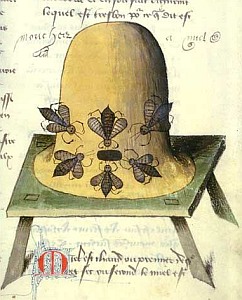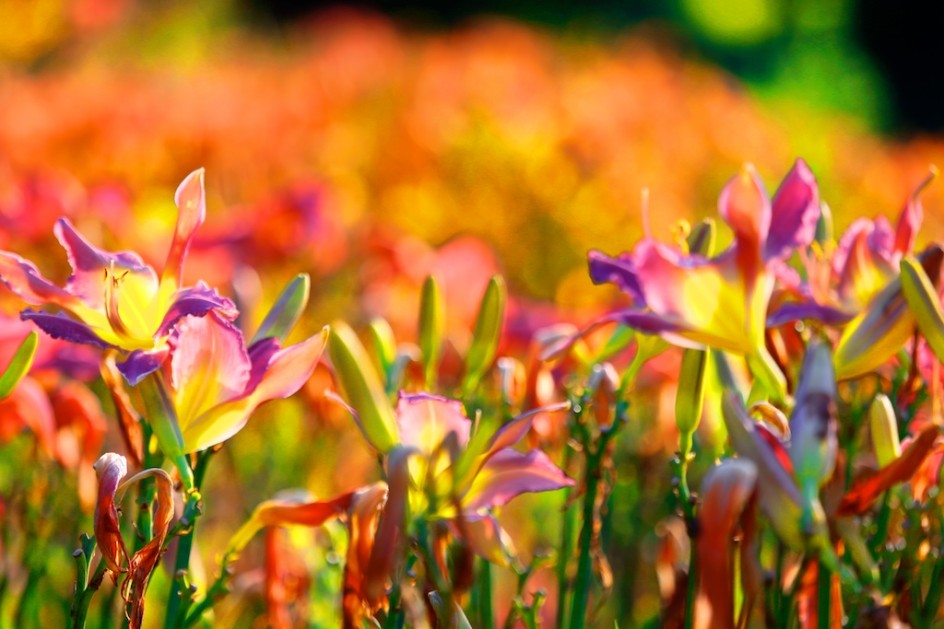(Crossposted at Colorado Pols)
The Pope is getting all the news today on Climate, having clarified – the faithful are told to believe—that God is not OK with trashing the earth, and that we need to do something about that.
“The climate is a common good, belonging to all and meant for all.”
But as Francis has his eyes on all Creation – the World writ large – the sometimes mysterious working of the world in detail are where most of the stuff gets done. Like pollination. This week is, after all, also National Pollinators Week.
Birds, and bees and others among the panoply of species populating our planet are not just buzzing around your sugary drink, or swooping hotdogs off your picnic table. They too are doing the Lord’s bidding, in small but crucial ways. Like keeping three-quarters of the world’s plants alive.
Most people know by now that bees are in decline and that this is a major problem – for the obvious reasons, because we also like food. Some important food crops, like corn, are wind pollinated. But most rely on pollinators. 
And it is not just the bees that in in trouble. Bees and other pollinators are on decline for a number of reasons. And across the spectrum, pollinators are suffering: bees, bats, birds and butterflies– all face numerous threats that put survival of many individual species in jeopardy. The National Wildlife Federation notes in an online article:
In addition to butterflies, the NAS report provides evidence of decline in three other pollinator groups: hummingbirds, bats and—especially—bumblebees. A 2008 report from the Xerces Society for Invertebrate Conservation, a nonprofit based in Portland, Oregon, paints an even bleaker picture of the familiar, fuzzy insects’ fate. Compiling data from more than three dozen scientists and “citizen monitors” across the country, the report concludes that populations of three formerly common species—the rusty-patched, yellowbanded and western bumblebee—have dropped drastically over the past decade. A fourth species, Franklin’s bumblebee (restricted to coastal Oregon and Northern California), has only been seen once in the past several years.
Exacerbating many of these threats is a single issue: Climate Change. And climate disruption is having other impacts on pollinators that in turn in time are likely to change overall ecology.
Like virtually all living things, pollinators are also threatened by global warming. According to biologist David Inouye of the University of Maryland, some are already beginning to respond to climate change. In the Colorado Rockies, for example, he and his colleagues recently surveyed the altitudinal distribution of several bumblebee species at the Rocky Mountain Biological Laboratory (RMBL). They compared the results with those of a survey they had conducted along the same transects as graduate students more than 30 years ago—and found that at least one species has shifted its range upslope by 1,500 feet.
Pollinators are particularly at risk to indirect effects of warming—when changes in temperature or precipitation cause shifts in the distribution of plants or the timing of nectar they produce. In another study at the Colorado lab, Inouye and RMBL colleague Billy Barr found that springtime emergence of Milbert’s tortoiseshell butterfly has been getting progressively earlier since the 1970s. Yet blooming time of the region’s spring wildflowers has not kept up. The findings demonstrate that “pollinators and plants do not respond the same way to environmental changes caused by global warming,” says Inouye. “This means they may lose the synchrony they once had.” Inouye is particularly concerned about hummingbirds—important wildflower pollinators—that migrate thousands of miles between winter habitats in the Tropics and breeding grounds in North America. Research shows that tropical and temperate ecosystems are responding very differently to global warming, and there’s no way a hummingbird wintering in Colombia would be able predict what the weather is like in Colorado.
 A number of impacts to species – including pollinators – are likely from a changing climate as human-induced global warming accelerates.
A number of impacts to species – including pollinators – are likely from a changing climate as human-induced global warming accelerates.
Shifts in seasonal temperatures are disrupting connections between pollinators and the plants that depend on them. Other phenomena such as extreme precipitation, drought, and pest infestations also likely are disruptive to pollinators and to the pollinator-plant relationship.
God’s creatures, great and small, have many task they can get on with to help the planet be healthy and thrive. Some are called to remind us of our moral obligation. Others make possible the very fruit of our labor – our food security and supply.
One nuts-and-bolts approach in the news lately is the U.S. Environmental Protection Agency’s “Clean Power Plan,” that begins to regulate carbon pollution from power plants as a step toward America’s new energy future, and a chance to hold it together on this magnificent garden planet.
 The Pope is making big news by declaring the Church’s engagement addressing Climate Change. His service is exemplary and the importance of his Encyclical cannot be downplayed. But the service of even the smallest of creatures is also of profound significance.
The Pope is making big news by declaring the Church’s engagement addressing Climate Change. His service is exemplary and the importance of his Encyclical cannot be downplayed. But the service of even the smallest of creatures is also of profound significance.
Global Warming is real, and it’s on us to Act on Climate. The Church is in, the birds and bees are in. Our leaders need to do their part and support the regulation of carbon pollution.
For although the lilies in the field may not toil though decked out like Solomon, the splendor is not only their own nor without any effort. The birds and bees played their part.
We need to do ours and support the Clean Power Plan and make sure our Senators and other elected officials do the same.

Comments are closed.